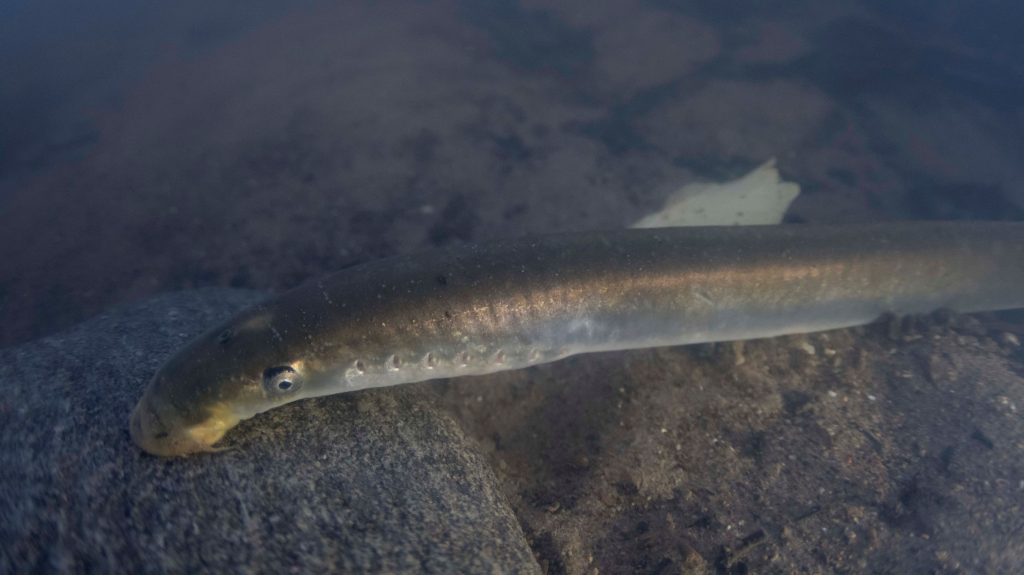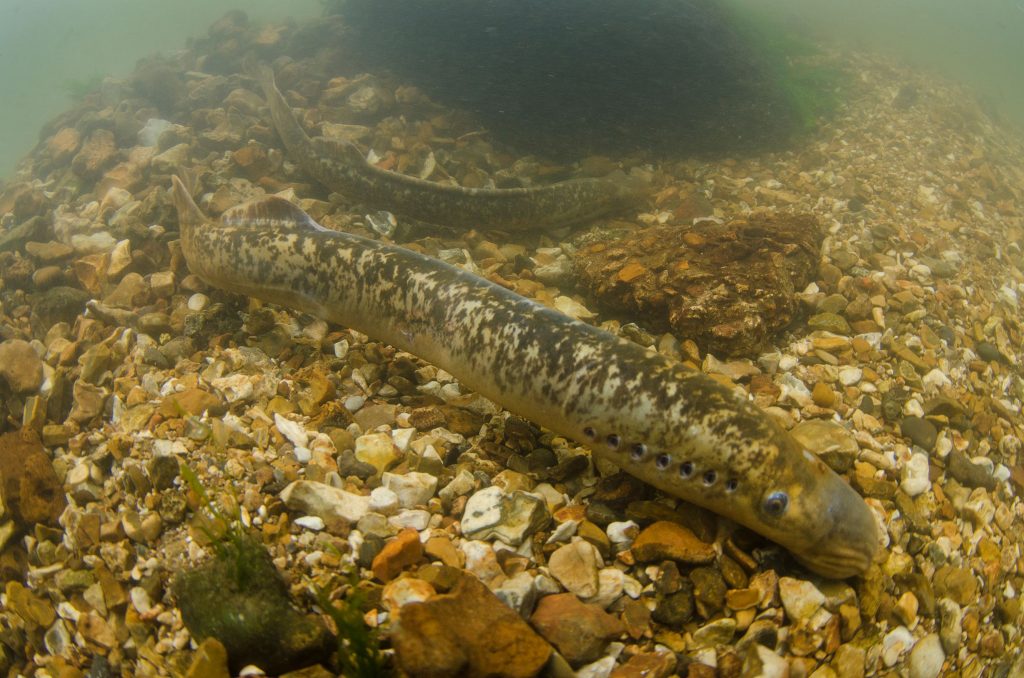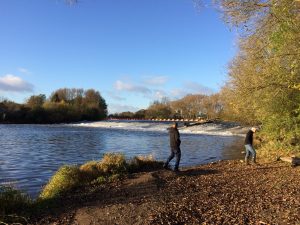Characteristics
Sea and River Lamprey are very similar to each other in appearance. Lamprey resemble Eels as they are long and slim ‘snake-like’ fish that have long dorsal fins, however they have many features that differ. Lamprey have a permanently open jawless ‘sucker’ instead of a mouth. This is full of barbed teeth which enable them to latch onto their prey when they are adults. Unlike other fish they don’t have gill covers. Instead they have round open gill ‘pores’. These become their breathing holes when they are attached to their prey. Lamprey are said to be amongst the oldest known vertebrates, and fossils of over 360 million years old have been found of Lamprey that closely resemble the fish we have in our rivers today! River lamprey grow to a maximum length of about 50cms and sea lamprey will grow larger, up to about 1m. Both fish are cartilaginous, meaning they have no bones but have cartilage tissue instead.
Diet
The first few years of a Lamprey’s life are spent burrowed in silty, muddy substrate eating algae and micro-organisms. As they mature they make their way downstream and hunt for food by preying on other fish. They are parasitic. By connecting their ‘sucker’ mouth to another fish they are able to eat their way through their hosts skin and feed on its blood. They are rarely fatal to the host fish. They do this on their migration downstream and into the sea, where Lamprey have been found attached to very large fish, including Basking Sharks!





